Root canal therapy
Root Canals
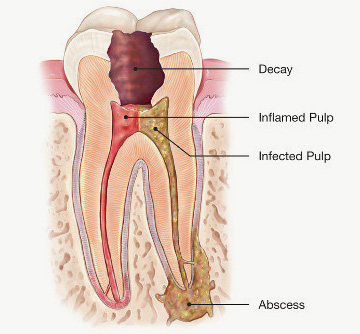
Root canal treatment is a straightforward procedure to relieve dental pain with the goal of saving your tooth. Patients typically need a root canal when there is inflammation or infection in the roots of a tooth.
During root canal treatment, one of our endodontists will carefully remove the pulp inside the tooth, clean, disinfect and shape the root canals, and place a temporary filling to seal the space.
You will then need to return to your general dentist for the appropriate restorative treatment.
Root Canal Treatment: A Step by Step Guide
Need a root canal? This informative video will walk you step-by-step through the procedure and explain how endodontists, who are root canal specialists, can save your teeth.
Root canals 101
Inside your tooth, beneath the white enamel and a hard layer called dentin, is a soft tissue called pulp. This tissue contains blood vessels, nerves and connective tissue, which help grow the root of your tooth during its development. A fully developed tooth can survive without the pulp because the tooth continues to be nourished by the tissues surrounding it.
Endodontic treatment is necessary when the pulp, the soft tissue inside the root canal, becomes inflamed or infected. The inflammation or infection can have a variety of causes: deep decay repeated dental procedures on the tooth or a crack or chip in the tooth. In addition, an injury to a tooth may cause pulp damage even if the tooth has no visible chips or cracks. If pulp inflammation or infection is left untreated, it can cause pain or lead to an abscess.
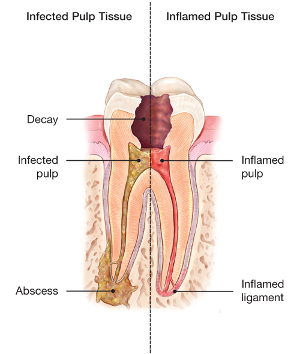
Saving the natural tooth with root canal treatment has many advantages:
- Efficient chewing
- Normal biting force and sensation
- Natural appearance
- Protects other teeth from excessive wear or strain
Root canal treatment explained
Endodontic treatment can often be performed in one or two visits and involves the following steps:
- The endodontist examines and x-rays the tooth, then administers local anesthetic. After the tooth is numb, the endodontist places a small protective sheet called a “dental dam” over the area to isolate the tooth and keep it clean and free of saliva during the procedure.
- The endodontist makes an opening in the crown of the tooth. Very small instruments are used to clean the pulp from the pulp chamber and root canals and to shape the space for filling.
- After the space is cleaned and shaped, the endodontist fills the root canals with a biocompatible material, usually a rubber-like material called gutta-percha. The gutta-percha is placed with an adhesive cement to ensure complete sealing of the root canals. In most cases, a temporary filling is placed to close the opening. The temporary filling will be removed by your dentist before the tooth is restored.
- After the final visit with your endodontist, you must return to your regular dentist to have a crown or other restoration placed on the tooth to protect and restore it to full function.
If the tooth lacks sufficient structure to hold the restoration in place, your dentist or endodontist may place a post inside the tooth. Ask your dentist for more details about the specific restoration planned for your tooth.
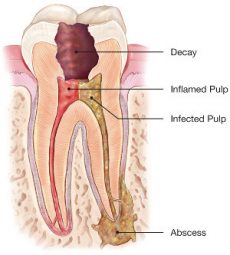
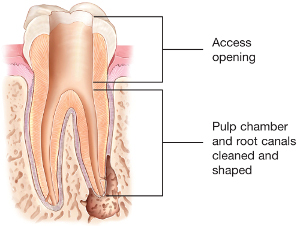
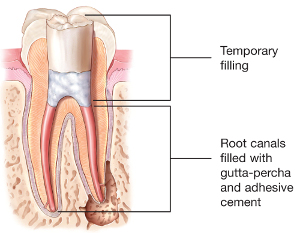
Find out what to expect when you visit our offices for treatment »
